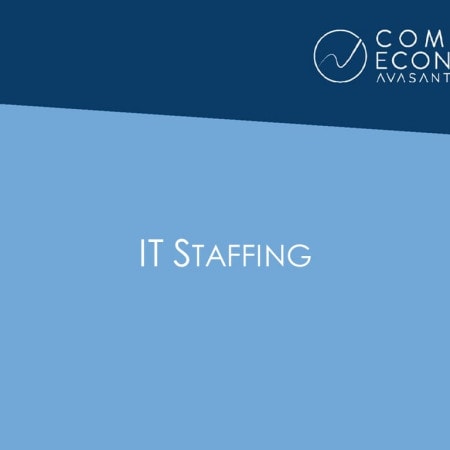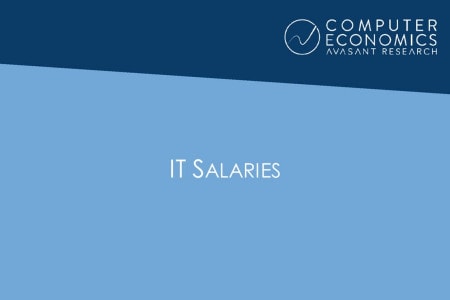-

Current Trends in the Use of IT Contract Workers
Managing a contract IT workforce is made easier by staffing agencies and vendor management systems, but IT managers must first determine the proper balance between full-time IT employees and temporary help. In this study, we examine the typical use of contract workers as a percentage of the IT staff by organization size and sector. We also examine the four-year trend between 2006 and 2009 to discover how this ratio has changed in light of the economic recession. Further, we examine how the aggressive use of temporary employees relates to staff growth and turnover. The report concludes with our view on current and future trends in contract labor use. (12 pp., 7 figs.)[Research Byte]
February, 2010
-

Managing Challenges in IT Staffing: 2007 Survey Results
Recruiting and retaining IT talent is a key success factor for any IT organization. This special study investigates current trends and challenges that IT managers are facing in recruiting and staffing, based on a survey of approximately 160 U.S. IT hiring managers. Statistics include IT staff growth rates, use of contractors and temporary employees, growth of outsourcing and offshoring, turnover rates, trends in recruiting difficulty, adequacy of the candidate supply, ability to offer competitive compensation, attractiveness to candidates of four major U.S. regions and 14 industry sectors, manager satisfaction with recruiting methods, use of outside recruiters, and the relative difficulty of recruiting for eight IT positions. (10 pp., 16 figs.)[Executive Summary]
March, 2007
-

IT Recruiting: Which Ways Work Best Today?
The effectiveness of various IT recruiting methods varies according to the job market. This article provides an analysis of the current IT labor market and why IT hiring is becoming more difficult. Based on our survey of nearly 200 senior IT executives, it then presents a detailed analysis of nine recruiting methods in terms of their popularity among employers, their overall effectiveness, and their ability to produce the greatest numbers of new hires. The nine methods are: recruiting firms, in-house recruiters, online job boards, employee referral programs, corporate websites, print ads, internships, job fairs/events, and outplacement services. The analysis highlights the differences between small, medium, and large firms and finds that the methods that are most popular are not necessarily the ones that are most effective or able to generate the most new hires. (9 pp., 4 figs.)[Executive Summary]
August, 2006
-

Online Job Boards: Losing Favor as an IT Recruiting Tool?
Preliminary data from our 2005 IT study on high-level staffing issues points to an interesting trend in recruiting: it appears that many companies may be losing interest in online job boards and going back to more traditional recruiting methods, such as—surprisingly—the use of third-party recruiters.
May, 2005
-

Preserving IT Talent
With an eye on economic recovery, businesses today depend on information technology to drive new opportunities more than ever before. Oftentimes, IT organizations are expected to create, execute, and deliver projects in three months rather than three quarters. Itâs no wonder that employee retention continues to dominate the vital issues list across IT disciplines. IT organizations do not have the time that it typically takes to backfill crucial positions, nor can they afford to bear the cost of recruiting and training replacements.
September, 2002
-

Severance Payments Tumble
Cash severance payments to employees terminated in 2001 have declined by up to 20% from severance packages awarded in 1997, according to a recent survey.
August, 2002
-

Help Wanted: Tech Savvy Leaders (April 2002)
Despite widespread workforce reductions in the United States during the last several months, the war for talent continues, with leadership and management leading senior executivesâ lists of the most-sought-after skills for 2002. These are among the key findings in a survey of Fortune 1000 companies released in March 2002 by Accenture.
April, 2002
-

Gender Gap Still Exists Between Men and Women at Work (April 2002)
People throughout North America say that the new generation of professionals lack commitment to their work. But in a study released by Catalyst of Generation X professionals in the United States and Canada, 47% say they would be happy spending the rest of their careers with their current organization, 85% care a great deal about the future of their organization, and 83% say they are willing to go beyond what is normally expected in order to ensure the success of that organization.
April, 2002
-

The Meaning of Work (April 2002)
According to the October 2001 Xylo Report, Finding Meaning and Purpose in the Workplace, the vast majority of American workers find their work meaningful (92%). Women are more likely than men to find their work meaningful (94% compared to 89%). Older workers are also more likely to find their work meaningful â almost eight in ten respondents (77%) over the age of 55 find their work very meaningful, while less than six in ten (58%) respondents between 18 and 24 do. Married people are seven percent more likely than singles to find meaning in their work (94% vs. 87%).
April, 2002
-

Most Job Seekers Are Not Comfortable Negotiating Employment Terms
Negotiating terms is one of the most important tasks in the hiring process, and yet it seems to be one that many job seekers dread. In a joint poll by the Society for Human Resource Management (SHRM) and CareerJournal.com, 67% of HR professionals said they are very comfortable with the negotiation process, while only 32% of job seekers said the same. The majority of both HR professionals and job seekers agree that negotiating total compensation is very important to the organization and the job candidate.
April, 2002

 Grid View
Grid View List View
List View